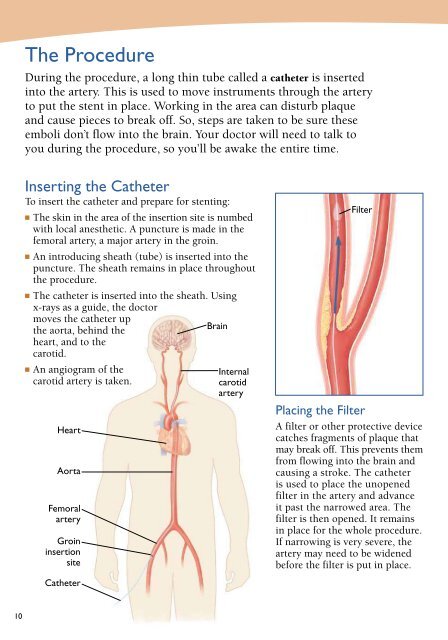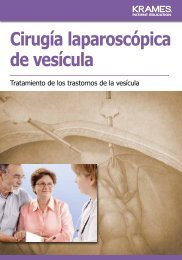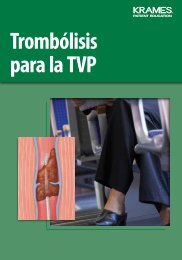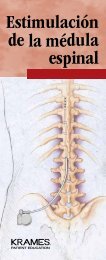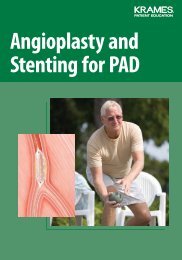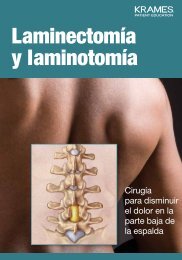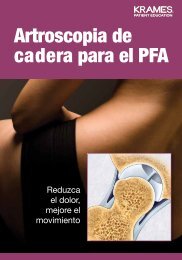Carotid Angioplasty and Stenting - Veterans Health Library
Carotid Angioplasty and Stenting - Veterans Health Library
Carotid Angioplasty and Stenting - Veterans Health Library
You also want an ePaper? Increase the reach of your titles
YUMPU automatically turns print PDFs into web optimized ePapers that Google loves.
The Procedure<br />
During the procedure, a long thin tube called a catheter is inserted<br />
into the artery. This is used to move instruments through the artery<br />
to put the stent in place. Working in the area can disturb plaque<br />
<strong>and</strong> cause pieces to break off. So, steps are taken to be sure these<br />
emboli don’t flow into the brain. Your doctor will need to talk to<br />
you during the procedure, so you’ll be awake the entire time.<br />
Inserting the Catheter<br />
To insert the catheter <strong>and</strong> prepare for stenting:<br />
■ The skin in the area of the insertion site is numbed<br />
with local anesthetic. A puncture is made in the<br />
femoral artery, a major artery in the groin.<br />
■ An introducing sheath (tube) is inserted into the<br />
puncture. The sheath remains in place throughout<br />
the procedure.<br />
■ The catheter is inserted into the sheath. Using<br />
x-rays as a guide, the doctor<br />
moves the catheter up<br />
the aorta, behind the<br />
Brain<br />
heart, <strong>and</strong> to the<br />
carotid.<br />
■ An angiogram of the<br />
carotid artery is taken.<br />
Heart<br />
Aorta<br />
Femoral<br />
artery<br />
Groin<br />
insertion<br />
site<br />
Catheter<br />
Internal<br />
carotid<br />
artery<br />
Filter<br />
Placing the Filter<br />
A filter or other protective device<br />
catches fragments of plaque that<br />
may break off. This prevents them<br />
from flowing into the brain <strong>and</strong><br />
causing a stroke. The catheter<br />
is used to place the unopened<br />
filter in the artery <strong>and</strong> advance<br />
it past the narrowed area. The<br />
filter is then opened. It remains<br />
in place for the whole procedure.<br />
If narrowing is very severe, the<br />
artery may need to be widened<br />
before the filter is put in place.<br />
10


